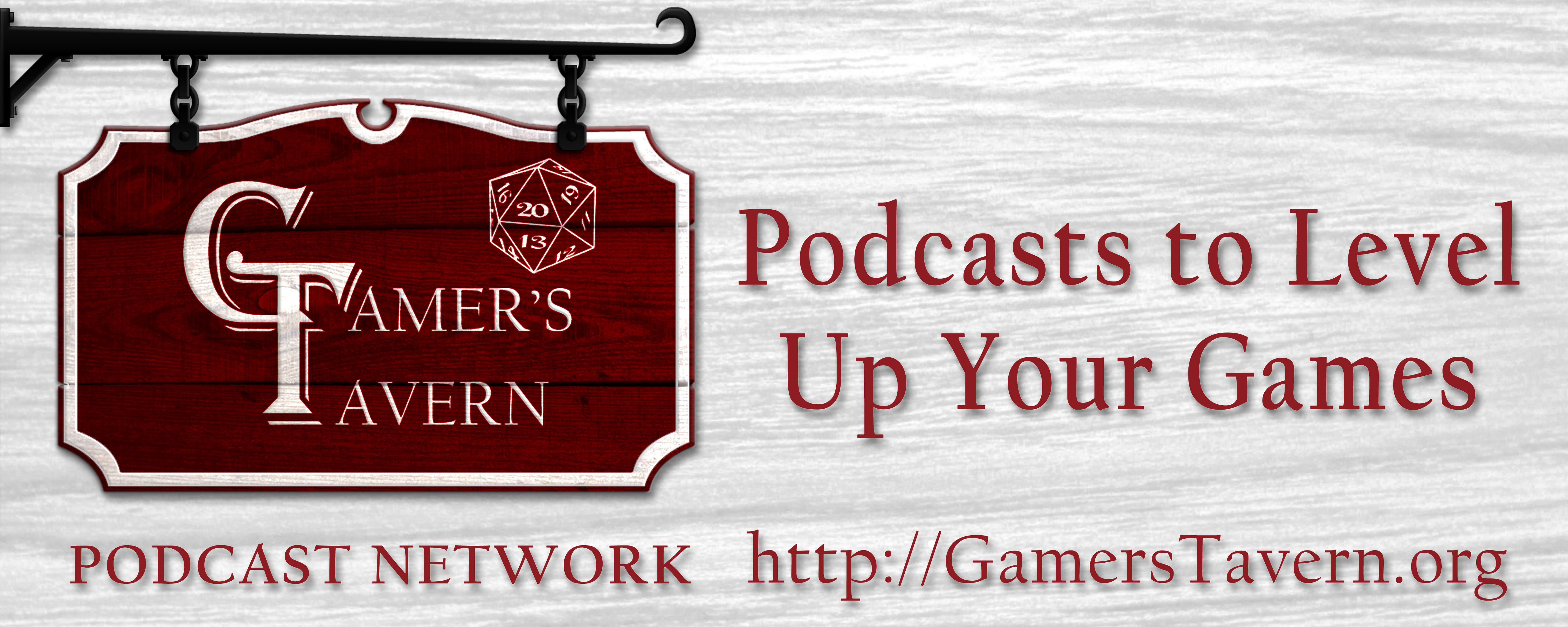Welcome to Gamer’s Tavern Happy Hour, our irregular podcast of mini-shows! This time, Darryl takes you behind the scenes at the Gamer’s Tavern Podcast Network to tell you how we make the show!
Don’t forget, our Kickstarter is still going strong, so make sure to donate now!
Microphones
Plantronics Audio 655 USB Multimedia Headset – This headset is comfortable and very high quality when recording through Skype. If you’re starting out or want to go all-USB, this is a good place to start.
MXL 990 Condenser Microphone with Shockmount – This is the microphone Darryl currently uses. You’ll be making use of the Noise Reduction effect in Audacity a lot to get rid of the background noise, but it’s the best sound you’re going to get for under $100.
Shure SM7B Vocal Dynamic Microphone – This is one of the two microphones we’re looking to moving toward. It’s one of the best dynamic vocal microphones you’re going to find unless you want to step up to high-end studio equipment in the $1200-1500 range. This is the microphone used by Nerdist.
Heil PR-40 Dynamic Studio Recording Microphone – This is the other beauty and runs neck and neck with the Shure SM7 in terms of quality. It requires a few more accessories like a shockmount and pop filter, but it has a rich bass sound. This is the microphone used by This Week in Tech.
Digital Recorders
Zoom R16 Multitrack SD Recorder Controller and Interface – This is our main recorder and one of the only pieces of equipment I’m not looking to replace. It can record up to 8 channels live, the built-in stereo microphones sound pretty damn good, and while it’s pricey, I’ve only had one issue with it ever. It can last about an hour on the eight AA batteries, so plan ahead if you’re doing a long recording session!
Zoom H4N Handy Portable Digital Recorder – The H4N is the recorder I’m wanting to put in Ross’s hands for recording at conventions. It can record two channels at once, using either the built-in stereo microphones or the two combo inputs at the base. If you’re not going multitrack for editing or if you’re just recording you and one other person, this will save you about $200 over the Zoom R16. Even if you upgrade later, you’ll still make use of this for its portability.
Note: Tascam also makes some very good digital recorders, but I’ve never used one so I can’t personally testify to them.
Mixer
BEHRINGER EURORACK UB2442FX-PRO – The mixer currently used by the Gamer’s Tavern Podcast Network, there’s nothing really wrong with it per se, but it is an older model and missing a lot of the features we need. The one I bought was also used, having spent a decade or so in service at a church before it came to us. It sounds great when it’s working, but it’s requiring a lot more percussive maintenance than I’d like.
BEHRINGER XENYX X2442USB – Drool. This is what I’m wanting to upgrade to. It’s basically the new model of the other mixer with a slightly more portable design that takes up less space and will be easier to haul around to conventions. It also has a lot more features and, since we’ll be buying new this time, shouldn’t have the same fiddly problems.
Software
While the Zoom R16 comes with a limited version of the professional (and expensive) software Cubase, I still recommend sticking with the completely free open-source multiplatform Audacity. It’s powerful, has a lot of options, is pretty easy to use once you pick up the few tricks, has a great network for support and instruction, and, again, it’s completely free.



